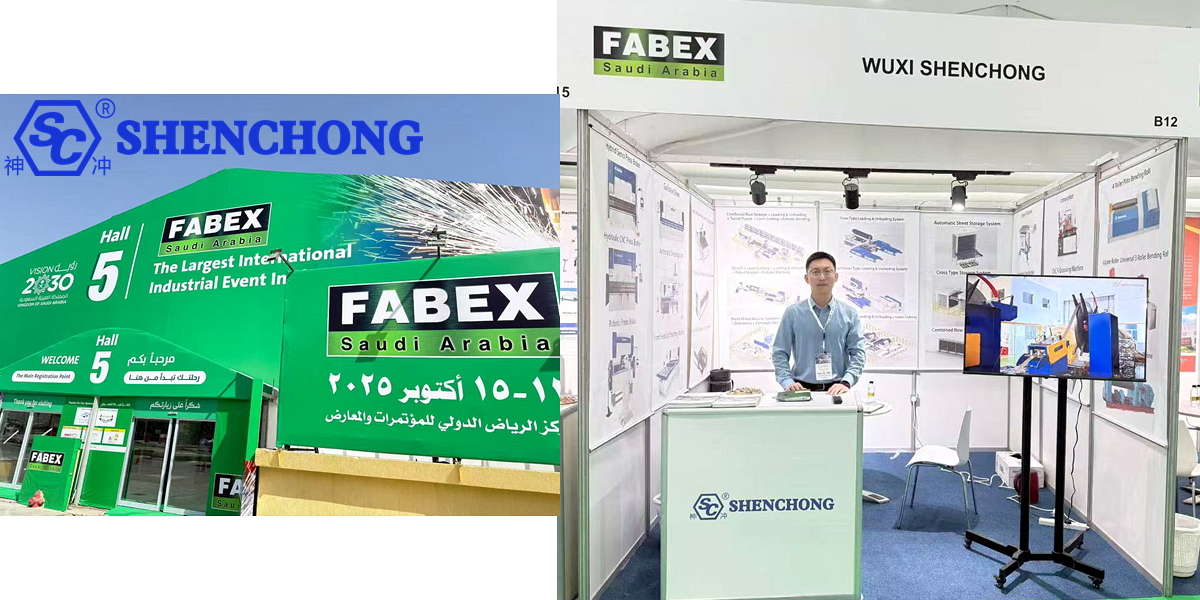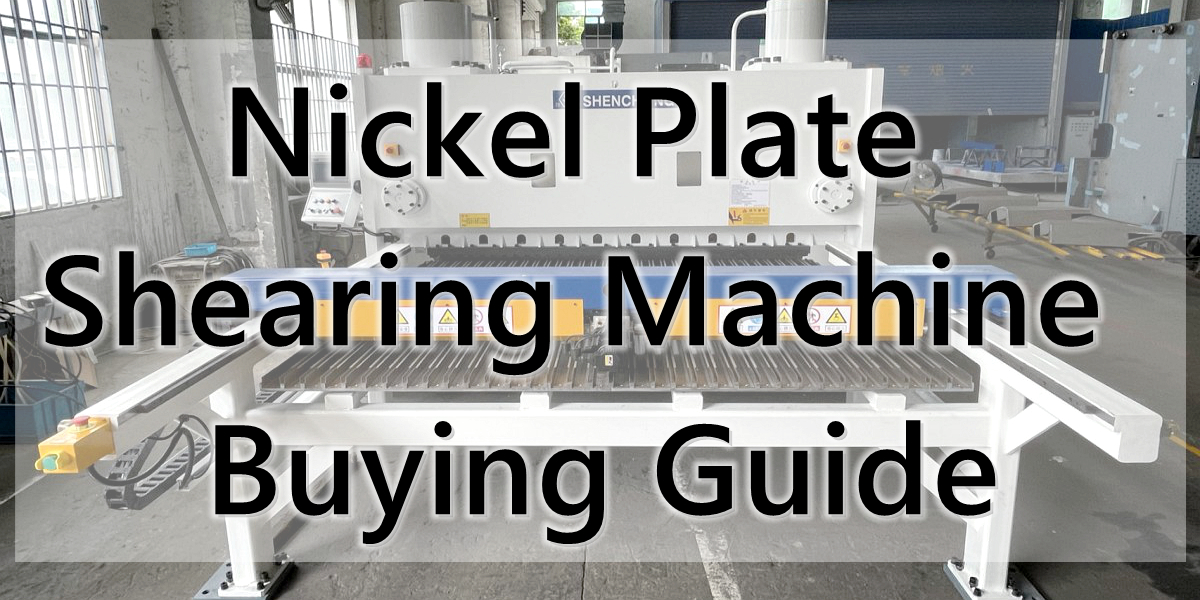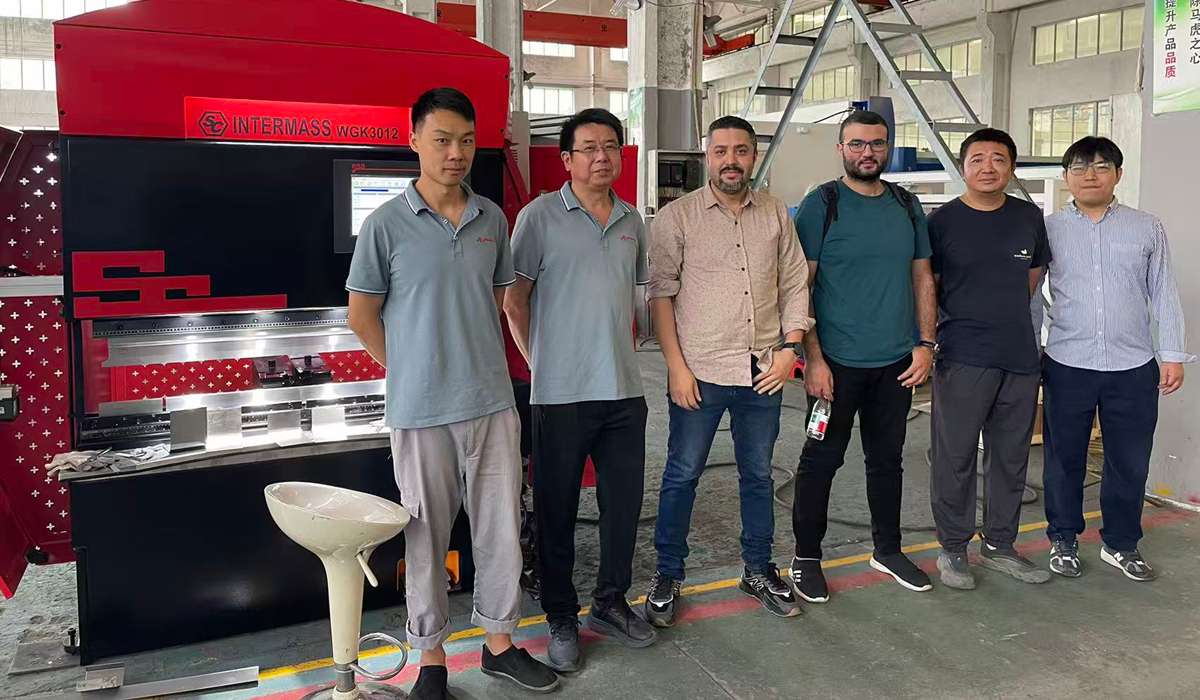Table of Contents
CNC hydraulic press brakes are core equipment in modern sheet metal processing, characterized by high precision, high efficiency, and high automation. To ensure stable operation, improve processing quality, extend the service life, and guarantee production safety, standardized maintenance and upkeep procedures are essential. Establishing standardized daily and periodic maintenance protocols can extend the equipment’s lifespan, reduce downtime, and improve processing accuracy and safety.
1. CNC Hydraulic Press Brake Maintenance Daily
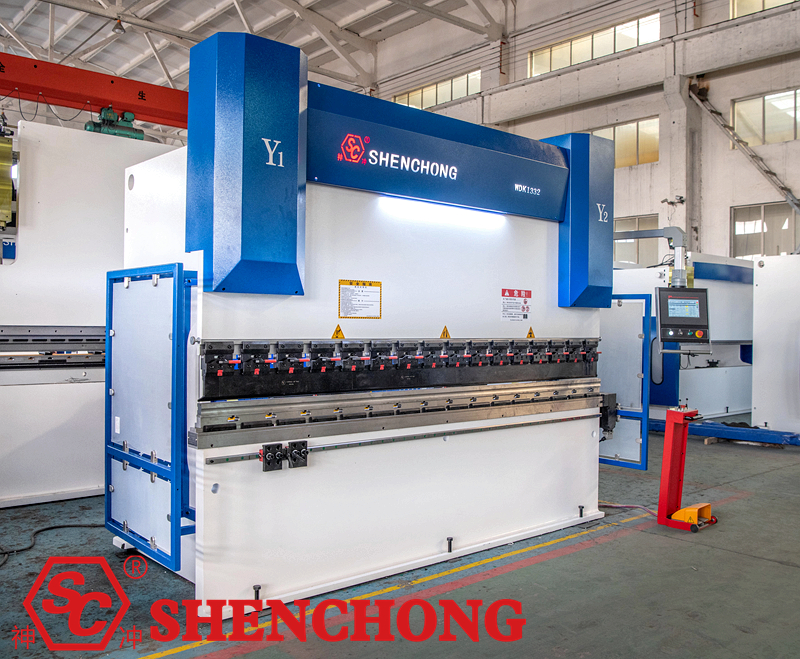
Pre-operation Check:
- Check that the power supply and voltage are stable, and that the grounding is reliable.
- Check that the hydraulic oil level is within the specified range.
- Ensure that the mold and fixtures are securely installed, and that there are no foreign objects on the worktable.
- Check that the emergency stop switch and safety devices are functioning correctly.
During Operation Check:
- Observe the hydraulic system for any abnormal sounds, vibrations, or leaks.
- Monitor the oil temperature (generally maintain between 35°C–55°C, not exceeding 60°C).
- Monitor the CNC system display for any alarms or error messages.
Post-operation Maintenance:
- Turn off the power and hydraulic pump, and clean the work area.
- Wipe the machine surface clean, keeping the guide rails and molds clean and dry.
- Position the slide at the lowest point to avoid prolonged pressure on the mechanism.
CNC Hydraulic Press Brake Maintenance Safety Precautions:
- Before performing any repair or maintenance, disconnect the main power and lock it, and attach a clear warning label.
- The hydraulic system must be depressurized before disassembly or repair.
- Wear personal protective equipment (safety shoes, goggles, insulated gloves, hearing protection, etc.).
- Never insert hands or any part of the body into the mold area during the bending process.
- When replacing electrical components or wiring, follow electrical safety standards and ensure proper grounding.
- Handle hot parts, moving parts, and sharp edges with caution.
2. Regular Maintenance
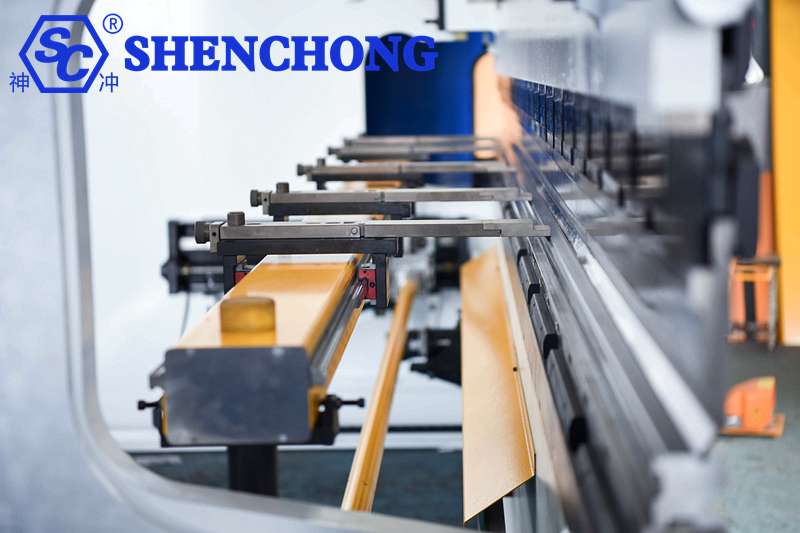
Weekly Maintenance:
- Check and tighten all connecting bolts and hydraulic hose fittings.
- Clean dust from the electrical cabinet to ensure proper ventilation.
- Check the safety devices, such as foot pedals and light curtains.
Monthly Maintenance:
- Lubricate ball screws, linear guides, and gear transmissions.
- Check that the motor, oil pump, and fan are operating normally.
- Check the cleanliness of the hydraulic oil. Replace it if it shows signs of emulsification or discoloration.
Quarterly Maintenance:
- Calibrate the stop position accuracy. Check the servo motor and ball screw clearance.
- Check for loose or overheated electrical connections.
- Clean the hydraulic system filter.
3. Annual Maintenance
- Perform a comprehensive inspection of the hydraulic system: replace all hydraulic fluid, clean the oil tank, replace all filter elements, and check the oil pump performance.
- Inspect the servo motor and encoder, perform absolute position calibration, and back up parameters.
- Inspect and replace worn-out tooling and cutting edges; grind or replace as necessary.
- Check the machine’s geometric accuracy (levelness, perpendicularity, positioning accuracy) and perform adjustments.
- Perform a comprehensive electrical system inspection: assess the lifespan of electrical components (contactors, relays, circuit breakers, etc.) and replace as needed.
4. Press Brake Maintenance Of Key Components
1) Lubrication System Maintenance
- Regularly apply appropriate lubricants to the designated lubrication points (main rails, ball screws, bearings, drive gears, hinges, etc.) according to the manufacturer’s lubrication diagram and lubrication point chart.
- General guidelines: Use grease that meets the specifications on the equipment nameplate or as recommended by the manufacturer (avoid mixing different types of grease).
- Automatic lubrication system: Regularly check the grease level, ensure that pipes and nozzles are not clogged, and verify that the pump is operating correctly.
2) Hydraulic System Maintenance
- Hydraulic oil: Use the type recommended by the manufacturer and pay attention to the ISO grade and viscosity range.
- Leakage check: After cleaning the hydraulic system, run the equipment and observe for any new leaks.
- Pressure check: Use a pressure gauge to check that the system operating pressure is within the normal range (refer to manufacturer’s specifications).
- Valves and actuators: Regularly inspect the condition of relief valves, directional valves, pressure gauges, and cylinder seals.
3) Electrical and Control System Maintenance
- Software and parameters: Regularly back up controller parameters, programs, and recipes (recommended at least monthly).
- Grounding check: Ensure all grounding wires are securely connected and that the grounding resistance meets local standards.
- Electrical components: Check contactors, relays, and heat dissipation; replace aging cables.
- Encoders/sensors: Check for secure installation, cleanliness, and, if necessary, measure signal integrity.
4) Mechanical Components and Mold Maintenance
- Mold maintenance: Clean after use, apply rust-preventive oil, and store on a drying rack.
- Fasteners: Maintain consistent torque on mold fastening bolts (follow manufacturer’s recommended torque).
- Check the clearance between the slide and the mold. Adjust or grind as necessary.
- Replace worn parts (positioning pins, bushings, guide blocks, etc.).
5) Pneumatic System Maintenance
- Air source treatment: Regularly drain condensate, check air pressure, filter, pressure regulator, and lubricator (FRL).
- Air tubing: Check for wear, aging, and loose connections; replace as necessary.
5. Common Faults and Troubleshooting Procedures
Fault: Hydraulic pressure not building up/slow movement
Troubleshooting: Check oil level, oil temperature, filter clogging, pump air intake, return line blockage, and abnormal hydraulic oil viscosity.
Fault: Accuracy drift or positioning error
Troubleshooting: Check ball screw clearance, verify servo parameters, check for encoder malfunction, and check for misalignment of the rear stop reference position.
Fault: Electrical fault (controller alarm)
Troubleshooting: Record the alarm code, refer to the controller manual for the corresponding fault, and check wiring, sensors, fuses, and power supply stability.
Fault: Safety light curtain/emergency stop not functioning
Troubleshooting: Immediately shut down the machine and disconnect power. Check the safety circuit and interlock, light curtain alignment and cleanliness, and emergency stop switch wiring and mechanism.
6. The Importance of CNC Bending Machine Maintenance And Care
As a key piece of equipment in sheet metal processing, CNC hydraulic press brake machines are characterized by high precision, high efficiency, and high automation. Proper maintenance and care not only extend the machine’s lifespan but also directly impact product quality and production efficiency. Its importance lies in the following aspects:
1) Extending Machine Lifespan
Bending machines operate under high pressure and strong impact, leading to wear and tear on hydraulic systems, mechanical components, and the CNC control system. Regular cleaning, lubrication, tightening, and replacement of worn parts effectively reduce component aging and extend the machine’s lifespan.
2) Ensuring Processing Accuracy
The parallelism of the bending machine’s ram and the accuracy of the back gauge directly determine the dimensions and angles of the bent workpiece. Regular maintenance prevents accuracy loss due to looseness, oil contamination, or servo drive errors, ensuring stable product quality.
3) Improving Production Efficiency
Well-maintained machines operate stably with low failure rates, reducing downtime and repair time. Proper maintenance ensures the hydraulic and electrical systems remain sensitive and reliable, increasing uptime and production efficiency.
4) Reducing Repair Costs
Neglecting maintenance can lead to minor problems escalating into major failures. For example, unfiltered hydraulic oil can damage valves, and insufficient lubrication of the lead screw can cause severe wear. Regular maintenance identifies potential problems early, preventing costly component damage and reducing repair costs.
5) Ensuring Operator Safety
Bending machines operate under high pressure; system failure can damage tooling or even injure personnel. Maintaining and inspecting safety devices (such as light curtains, emergency stop buttons, and hydraulic safety valves) is essential for operator safety.
6) Meeting Management and Customer Requirements
Complete press brake maintenance records are an important part of equipment management, facilitating quality system audits (e.g., ISO 9001). Well-maintained equipment enhances customer confidence in the company’s production capabilities and quality.
7. Summary
CNC Hydraulic Press Brake Maintenance and Service Manual (Summary Table):
Level | Frequency | Content |
Daily maintenance | Every shift/daily | 1. Pre-operation checks: Verify power supply, grounding, hydraulic oil level, secure installation of the mold, and functionality of safety devices. 2. Monitoring during operation: Check for any abnormal sounds, vibrations, or leaks in the hydraulic system; monitor oil temperature; and check for any alarms from the CNC system. 3. Post-operation/end-of-shift cleaning: Clean the worktable, wipe down the machine surface, remove debris; clean up chips; lower the slide to its lowest position; shut down power and lock the machine for safety. |
Weekly maintenance | Once a week | 1. Tighten all bolts, connectors, and pipes; immediately adjust any loose parts. 2. Clean dust from inside and outside the electrical cabinet and control box; ensure that the cooling fan is operating normally. 3. Check the functionality of the foot pedal switch, light curtain safety system, and other safety devices. |
Monthly maintenance | Once a month | 1. Lubricate the guide rails, sliders, ball screws, and gear transmission components. 2. Check the motor, hydraulic pump, and hydraulic cylinder for any unusual noises or leaks. 3. Check the quality of the hydraulic oil (cleanliness, color, and presence of emulsification); if any abnormalities are found, consider replacing or filtering the oil. |
Quarterly maintenance | Every three months | 1. Check the parallelism of the slide block and the accuracy of the rear stop position; measure and adjust the servo system and lead screw clearance. 2. Check all electrical connection terminals for looseness and overheating. 3. Clean or replace the hydraulic system filter; inspect the condition of hydraulic hoses and seals. |
Annual maintenance | Annually | 1. Check the parallelism of the slide block and the accuracy of the rear stop position; measure and adjust the servo system and lead screw clearance. 2. Check all electrical connection terminals for looseness and overheating. 3. Clean or replace the hydraulic system filter; inspect the condition of hydraulic hoses and seals. |
CNC hydraulic press brake maintenance is not just about repairing breakdowns. It’s a comprehensive management approach that ensures precision, improves efficiency, reduces costs, guarantees safety, and extends the machine’s lifespan. Neglecting maintenance often leads to higher repair costs and production losses.
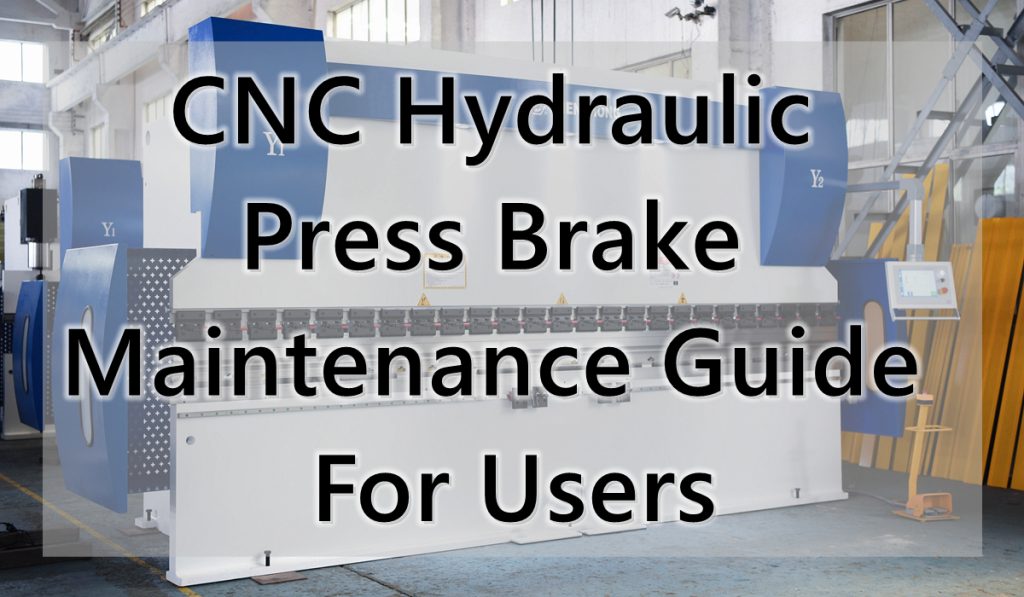
![Intelligent Sheet Metal Processing [FAQ]](https://www.shen-chong.com/wp-content/uploads/2025/11/Intelligent-Sheet-Metal-Processing-FAQ.jpg)

